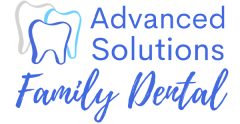Dental preventive care involves proactive measures to maintain oral health, emphasizing regular brushing, flossing, and routine dental check-ups. This preventative approach aims to thwart the onset of oral diseases such as cavities, gum disease, and enamel erosion.
By promoting good oral hygiene habits and early detection of issues, preventive care significantly reduces the risk of costly and invasive dental treatments. Additionally, it contributes to overall well-being, as oral health has a connection to systemic health.
Embracing preventive care ensures a brighter smile and supports long-term oral and systemic health, emphasizing the adage that prevention is better than cure.
The Benefits of Dental Preventive Care
1. Early Disease Detection: Regular preventive dental check-ups enable early identification of potential oral health issues, allowing timely intervention and treatment. Early Disease detection also aids in preventing the progression of problems such as cavities, gum disease, and oral infections.
2. Cost Savings: Investing in preventive care is cost-effective in the long run, as it helps avoid expensive dental procedures associated with advanced stages of dental diseases. Routine check-ups and cleanings are more affordable than extensive treatments for neglected oral health.
3. Maintaining Oral Hygiene: Dental preventive care emphasizes daily practices like brushing and flossing, promoting optimal oral hygiene. These habits prevent plaque buildup, reducing the risk of cavities, bad breath, and other oral health issues.
4. Preserving Natural Teeth: By addressing issues promptly and promoting good oral hygiene, preventive care contributes to the preservation of natural teeth. Preventive care also helps individuals maintain their overall oral function and appearance.
5. Enhancing Overall Health: Oral health works in coordination with overall well-being. Preventive dental care protects the mouth and reduces the risk of systemic health issues linked to poor oral health, such as cardiovascular diseases and diabetes. Getting regular dental exams helps you lead a healthy lifestyle.
Common Misconceptions
1. “I don’t need to see a dentist if my teeth feel fine”
One common misconception is that dental visits are only necessary when experiencing pain. In reality, preventive care involves regular check-ups to detect issues before they cause discomfort, preventing more significant problems.
2. “Brushing alone is sufficient for good oral health.”
While brushing is crucial, it’s not the sole solution. Dental preventive care includes flossing, regular cleanings, and professional check-ups. Neglecting these aspects may lead to hidden dental issues.
3. “Dental care is only about teeth.”
Some believe oral health is solely concerned with teeth. In reality, preventive care also involves monitoring gum health, detecting early signs of gum disease, and addressing issues that can impact overall health.
4. “I don’t have natural teeth, so I don’t need preventive care.”
Individuals with dental prosthetics may assume they are exempt from preventive care. However, regular check-ups are essential for monitoring the health of the gums, ensuring the longevity of dental appliances, and addressing any potential issues.
5. “Children don’t need preventive dental care.”
Another misconception is that baby teeth are not crucial. However, early preventive care for children is vital for establishing good oral hygiene habits, preventing cavities, and ensuring the proper development of permanent teeth. Regular dental visits are crucial for children’s oral health.
Steps to prioritize dental preventive care in your life
1. Establish a Consistent Routine: Develop a daily oral hygiene routine that includes brushing at least twice daily and flossing once daily. Maintaining good oral health and minimizing plaque accumulation requires consistency.
2. Schedule Regular Dental Check-ups: Prioritize routine dental check-ups every six months. Regular visits to your dentist allow for early detection of potential issues and professional cleanings to remove plaque and tartar, contributing to long-term oral health.
3. Educate Yourself: Stay informed about proper oral care practices and the importance of preventive measures. Understanding the impact of diet, lifestyle choices, and hygiene habits on oral health empowers you to make informed decisions.
4. Adopt a Balanced Diet: Incorporate a diet rich in nutrients that promote oral health, such as calcium and vitamin D. Limit sugary and acidic foods, as they contribute to tooth decay. Maintaining a balanced diet supports overall dental wellness.
5. Invest in Necessary Tools: Ensure you have the right tools for effective oral care, including a soft-bristled toothbrush, fluoride toothpaste, and dental floss. Consider using an antimicrobial mouthwash as directed by your dentist. Investing in these tools enhances your ability to maintain optimal oral hygiene at home.
Different Types of Dental Preventive Care
1. Regular Dental Check-ups: Scheduling routine dental check-ups, typically every six months, is a fundamental component of preventive care. These visits involve professional cleanings, thorough examinations, and early detection of potential issues before they escalate.
2. Professional Cleanings: Dental cleanings performed by a dental hygienist involve removing plaque and tartar buildup, which cannot be effectively addressed through regular brushing and flossing alone. Professional cleaning also helps to prevent cavities, gum disease, and other oral health issues.
3. Fluoride Treatments: Fluoride is a mineral that strengthens tooth enamel and helps prevent tooth decay. Professional fluoride treatments, often applied during dental check-ups, offer additional protection against cavities.
4. Sealants: Dental sealants are thin protective coatings applied to the chewing surfaces of molars and premolars. These sealants act as a barrier, preventing bacteria and debris from settling into the crevices of the teeth and reducing the risk of cavities.
5. Oral Health Education: Providing patients with information about proper oral hygiene practices, diet, and lifestyle choices is crucial to preventive care. Dental professionals offer guidance on maintaining good oral health habits at home to complement in-office treatments and check-ups.
How do you choose the right dentist?
1. Credentials and Qualifications: Verify the dentist’s credentials, education, and qualifications. Make sure they have a license and are a part of reputable dentistry associations. This information is usually available on their website or is obtainable by contacting their office.
2. Reputation and Reviews: Research the dentist’s reputation by reading online reviews and testimonials from current or former patients. Positive feedback regarding preventive care, communication skills, and overall patient satisfaction can help you gauge the dentist’s competence.
3. Location and Accessibility: Choose a dentist whose office is convenient, making it easier for you to attend regular check-ups. Consider parking availability, public transportation options, and office hours that align with your schedule.
4. Range of Services: Look for a dentist who offers a comprehensive range of preventive services, including regular check-ups, cleanings, fluoride treatments, and education on oral health. Having a dentist who provides various preventative care options fully addresses your needs.
5. Communication Style: Choose a dentist with practical communication skills. A provider who takes the time to explain procedures, answer questions, and discuss preventive care plans fosters a positive patient-dentist relationship. Clear communication enhances your understanding of preventive measures and promotes better oral health outcomes.
In conclusion, prioritizing preventive dentistry is essential for lasting oral health. When seeking optimal care, choose a reputable provider like Advanced Solutions Family Dental in Oak Forest.
They ensure the longevity of your smile with qualified professionals, a comprehensive range of preventive services, and a commitment to patient education.
Experience top-notch dental care that goes beyond expectations. Schedule your appointment with Advanced Solutions Family Dental today and journey towards a healthier, brighter smile.
Remember, a proactive approach to oral health is the key to preventing issues. Invest in your smile – because prevention is the best medicine!







